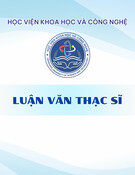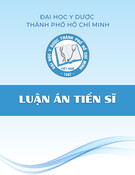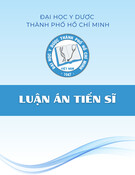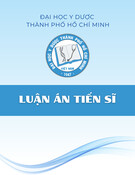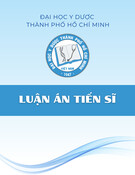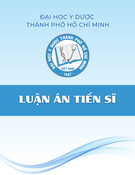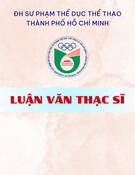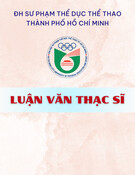
VIETNAM NATIONAL UNIVERSITY, HANOI
UNIVERSITY OF ENGINEERING AND TECHNOLOGY
MAN DUC CHUC
RESEARCH ON LAND-COVER CLASSIFICATION
METHODOLOGIES FOR OPTICAL SATELLITE IMAGES
MASTER THESIS IN COMPUTER SCIENCE
Hanoi – 2017

VIETNAM NATIONAL UNIVERSITY, HANOI
UNIVERSITY OF ENGINEERING AND TECHNOLOGY
MAN DUC CHUC
RESEARCH ON LAND-COVER CLASSIFICATION
METHODOLOGIES FOR OPTICAL SATELLITE IMAGES
DEPARTMENT: COMPUTER SCIENCE
MAJOR: COMPUTER SCIENCE
CODE: 60480101
MASTER THESIS IN COMPUTER SCIENCE
SUPERVISOR: Dr. NGUYEN THI NHAT THANH
Hanoi – 2017

PLEDGE
I hereby undertake that the content of the thesis: “Research on Land-
Cover classification methodologies for optical satellite images” is the research
I have conducted under the supervision of Dr. Nguyen Thi Nhat Thanh. In the
whole content of the dissertation, what is presented is what I learned and
developed from the previous studies. All of the references are legible and legally
quoted.
I am responsible for my assurance.
Hanoi, day month year 2017
Thesis’s author
Man Duc Chuc

ACKNOWLEDGEMENTS
I would like to express my deep gratitude to my supervisor, Dr. Nguyen Thi
Nhat Thanh. She has given me the opportunity to pursue research in my favorite
field. During the dissertation, she has given me valuable suggestions on the
subject, and useful advices so that I could finish my dissertation.
I also sincerely thank the lecturers in the Faculty of Information
Technology, University of Engineering and Technology - Vietnam National
University Hanoi, and FIMO Center for teaching me valuable knowledge and
experience during my research.
Finally, I would like to thank my family, my friends, and those who have
supported and encouraged me.
This work was supported by the Space Technology Program of Vietnam
under Grant VT-UD/06/16-20.
Hanoi, day month year 2017
Man Duc Chuc

1
Content
CHAPTER 1. INTRODUCTION .................................................................................... 5
1.1.Motivation .......................................................................................................... 5
1.2.Objectives, contributions and thesis structure ................................................... 9
CHAPTER 2. THEORETICAL BACKGROUND ....................................................... 10
2.1.Remote sensing concepts ................................................................................. 10
2.1.1.General introduction .............................................................................. 10
2.1.2.Classification of remote sensing systems .............................................. 12
2.1.3.Typical spectrum used in remote sensing systems ................................ 14
2.2.Satellite images ................................................................................................ 15
2.2.1.Introduction ............................................................................................ 15
2.2.2.Landsat 8 images ................................................................................... 17
2.3.Compositing methods ...................................................................................... 20
2.4.Machine learning methods in land cover study ............................................... 21
2.4.1.Logistic Regression................................................................................ 21
2.4.2.Support Vector Machine ........................................................................ 22
2.4.3.Artificial Neural Network ...................................................................... 23
2.4.4.eXtreme Gradient Boosting ................................................................... 25
2.4.5.Ensemble methods ................................................................................. 25
2.4.6.Other promising methods ...................................................................... 26
CHAPTER 3. PROPOSED LAND COVER CLASSIFICATION METHOD ............. 27
3.1.Study area ......................................................................................................... 27
3.2.Data collection ................................................................................................. 28
3.2.1.Reference data ........................................................................................ 28

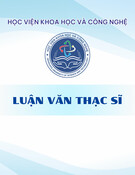

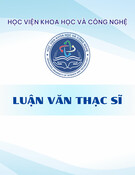
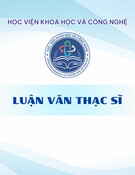
![Luận văn Thạc sĩ: Tổng hợp và đánh giá hoạt tính chống ung thư của hợp phần lai tetrahydro-beta-carboline và imidazo[1,5-a]pyridine](https://cdn.tailieu.vn/images/document/thumbnail/2025/20250816/vijiraiya/135x160/26811755333398.jpg)

